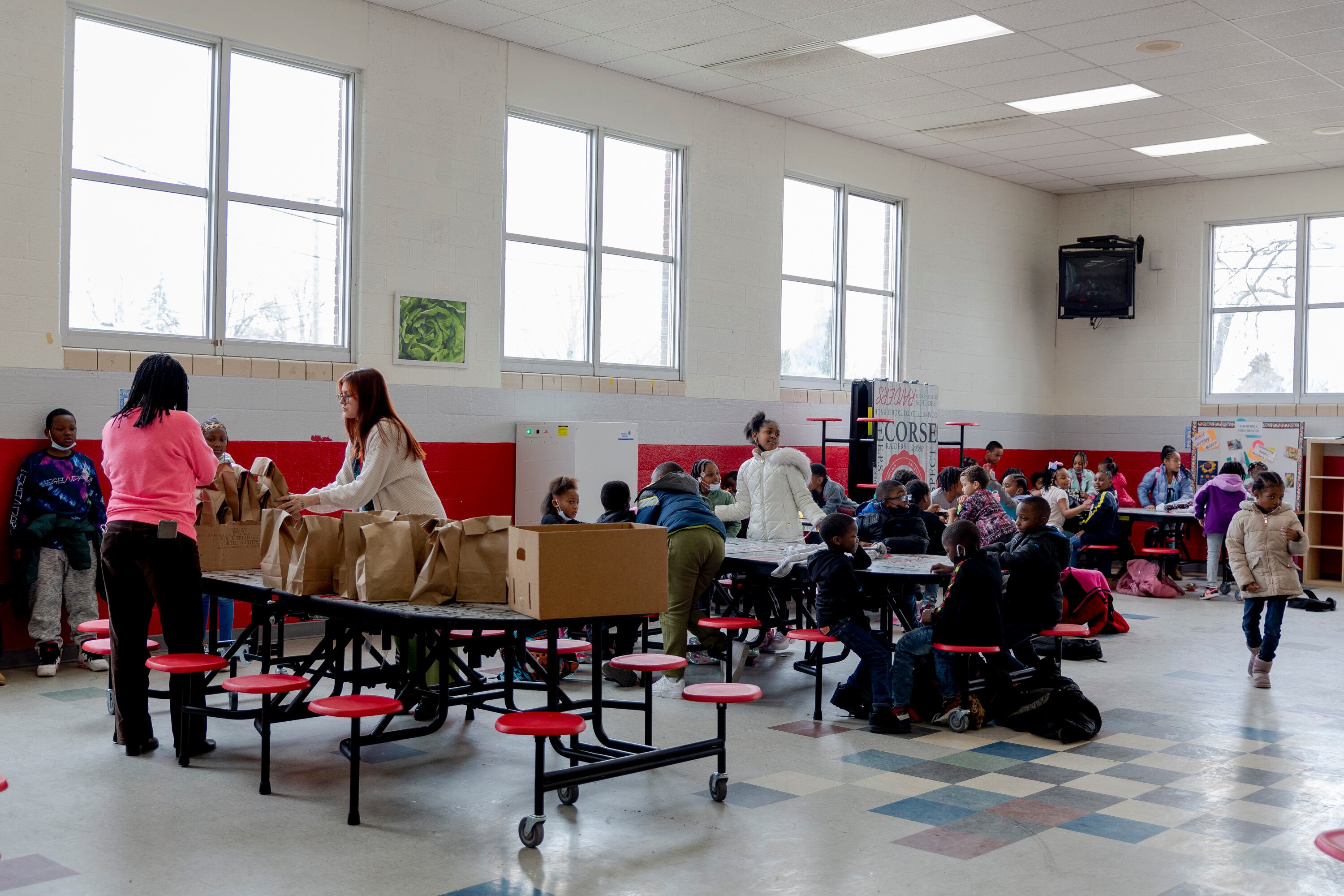As food and other costs continue to rise, schools are getting help from federal legislation that will reimburse schools for meals at higher rates than usual and bring back rules that make it easier to get food to children and teens over the summer.
The legislation, known as the Keep Kids Fed Act, was sent to President Biden on Friday after it cleared Congress.
The measures are seen as a lifeline for school nutrition programs, many of which have grappled with missing food deliveries, staff shortages, and higher prices for staples like chicken, milk, and paper products this year. Schools had gotten higher reimbursement rates over the last two years, but those were set to expire at the end of the month. The additional funds will make it less likely that schools will have to dip into their education budgets to cover the cost of their meal programs in the upcoming school year.
The legislation also extends several pandemic-era waivers that had allowed schools to run grab-and-go meal programs and deliver food to students in the summer months. Those waivers were also going to end on June 30.
That will make a big difference in districts like Houston, which had delivered meals to students in 25 apartment buildings across the district last summer. Betti Wiggins, the officer of nutrition services, worried about not being able to reach those students again this year.
“Absolutely, I’ll be all over apartment buildings,” she said. That will help with “what the summer program was designed to do: Feed kids who do not have two meals available to them in the summertime.”
Congressional Democrats had pushed to extend the meal waivers earlier this spring, but Republican leaders shot that down, in part because of the price tag. This proposal covers the added costs with unspent agriculture department funds, as well as $400 million in COVID relief dollars that were originally set aside for colleges and universities.
The measures are only for one school year, but advocates say they will make a meaningful difference for families.
This summer, many school districts had planned to shorten their summer meal programs or give out food at fewer sites without the waivers in place. Starting in July, students would have had to eat each meal on site.
Now, school officials say they’ll be able to resume programs that allow families to pick up multiple meals at once and take them home. That will ease the burden on working parents and caregivers who have to drive a long distance to feeding sites, especially as gas prices skyrocket.
“We’re already hearing from a lot of our partners on the ground that parents are really, really frustrated,” said Lisa Davis, who oversees the No Kid Hungry campaign at the nonprofit Share Our Strength. “People are having to really think about it: Is the cost of the trip every single day more than the value of the food that my child is getting? It’s agonizing for parents.”
The waivers also allow schools and summer feeding programs to give out meals at centralized sites, instead of only in areas where there is a high poverty rate. For Charleston County schools in South Carolina, that means Walter Campbell, the executive director of nutrition services, will be able to add a public library back to the meal site list that he planned to drop if the waivers went away.
Still, the changes may come too late for some school districts, especially smaller ones that can’t afford to make sweeping changes to their meal programs at the drop of a hat. Advocates also worry about whether families will find out about the changes, since many districts put out the word about how their summer meal program would run months ago.
“Because of the timing, I think unfortunately, we will see communities where summer meals aren’t as available as they would have been if Congress had gotten this done in March,” Davis said. “But I think we will see many more sites, and many more kids served than we would if Congress didn’t do this at all.”
One big change is that families will again have to fill out paperwork to qualify their children for free and reduced priced meals when school starts in the fall, a requirement the waivers had lifted over the past two years. During the pandemic, schools were able to give meals to all students at no cost without checking their family income.
But between the higher reimbursement rates and the waiver of fines if schools can’t meet the usual nutrition standards — a common occurrence when delivery trucks arrive half-empty or without certain products — school nutrition officials say they hope they can redirect that money into healthier meals for students.
Wiggins in Houston, for example, didn’t think she’d be able to afford putting out salad bars at schools this year, but the extra funds will allow her to buy more fresh fruits and vegetables, which tend to cost more.
Campbell in Charleston County says the higher reimbursement rates mean he’ll be able to get burgers without a bunch of fillers in them. Patties that are mostly meat and spices cost 90 cents each, while the versions with additives cost 40 cents to 50 cents each, he said. And he’ll be able to buy healthier buns and salad dressing, too.
“We don’t want products with high-fructose corn syrup,” he said, but the healthier alternatives cost more. “Having these additional funds will allow us to continue doing what we’ve been doing.”
Still the legislation won’t fix the supply chain issues many schools expect will continue into next school year. That means schools will keep jumping through hoops to put food on students’ plates. Campbell’s district, for example, is working with 14 neighboring districts to order the same ingredients to reduce the chances they’ll get shorted. They’ve learned to use the same meat to make chicken sandwiches as chicken parmesan.
“You get creative with the menu,” Campbell said. It’s “talking to your distributor and saying: ‘Well, what do you have? What can you get hold of?’”
Kalyn Belsha is a national education reporter based in Chicago. Contact her at kbelsha@chalkbeat.org.






